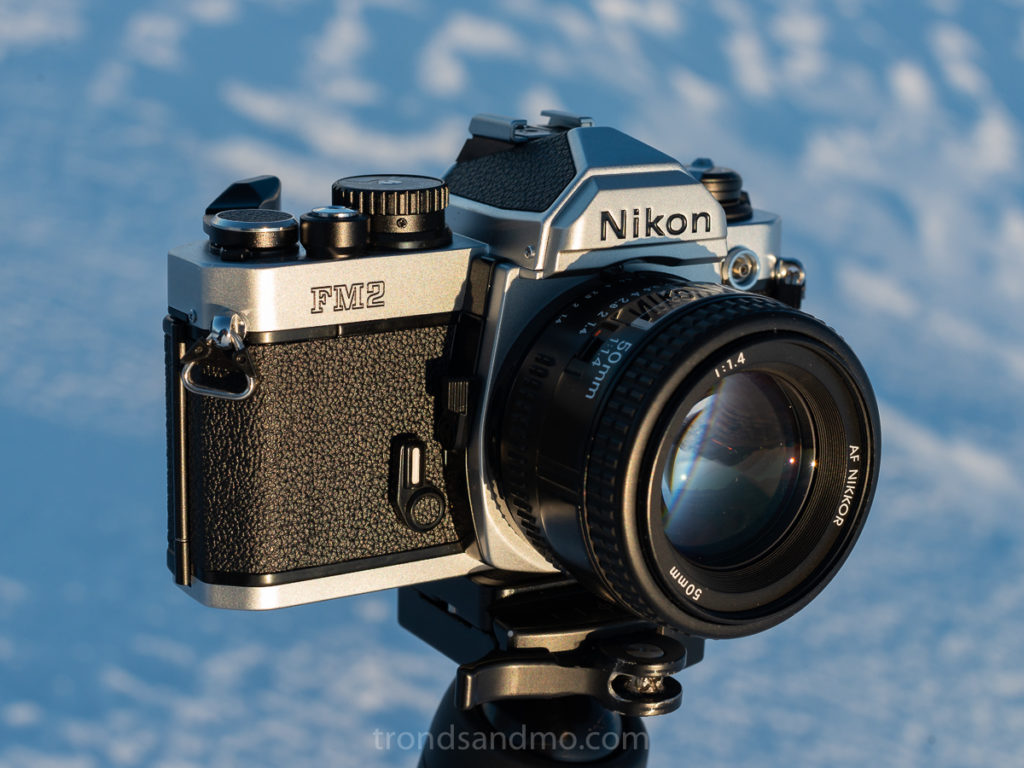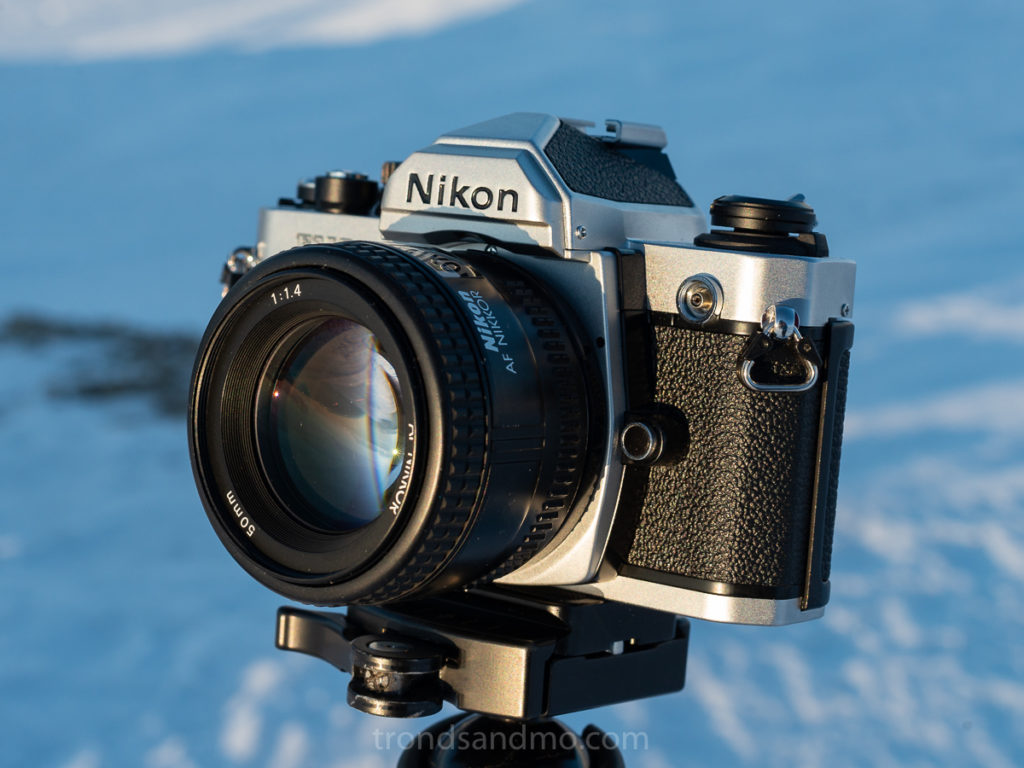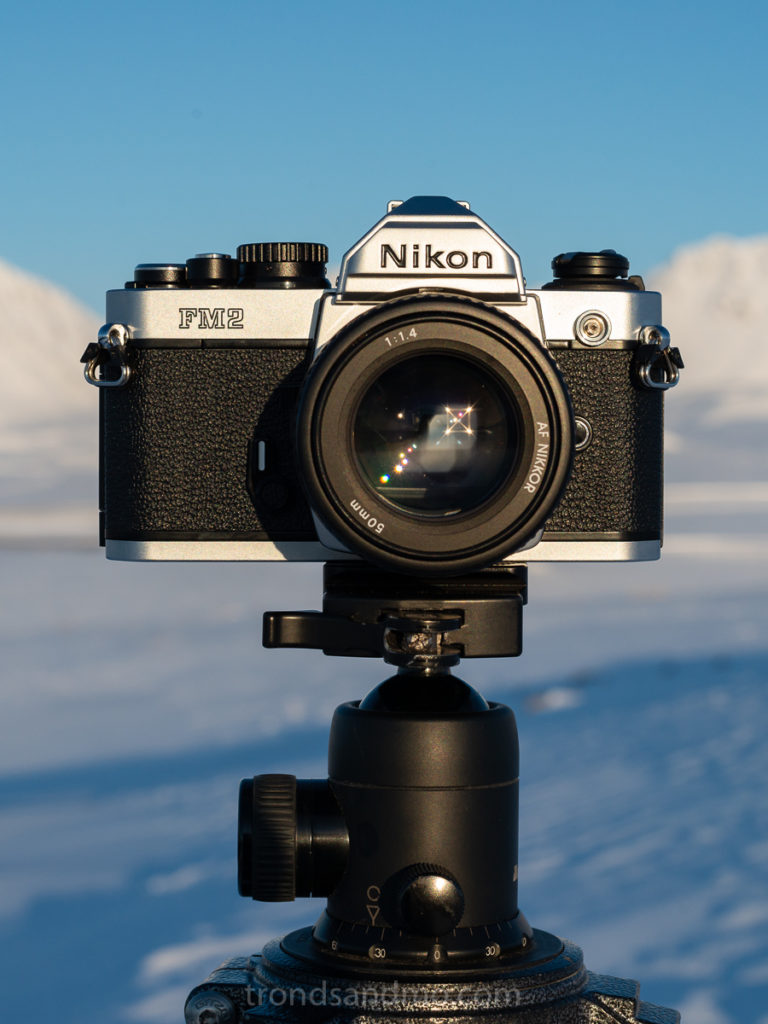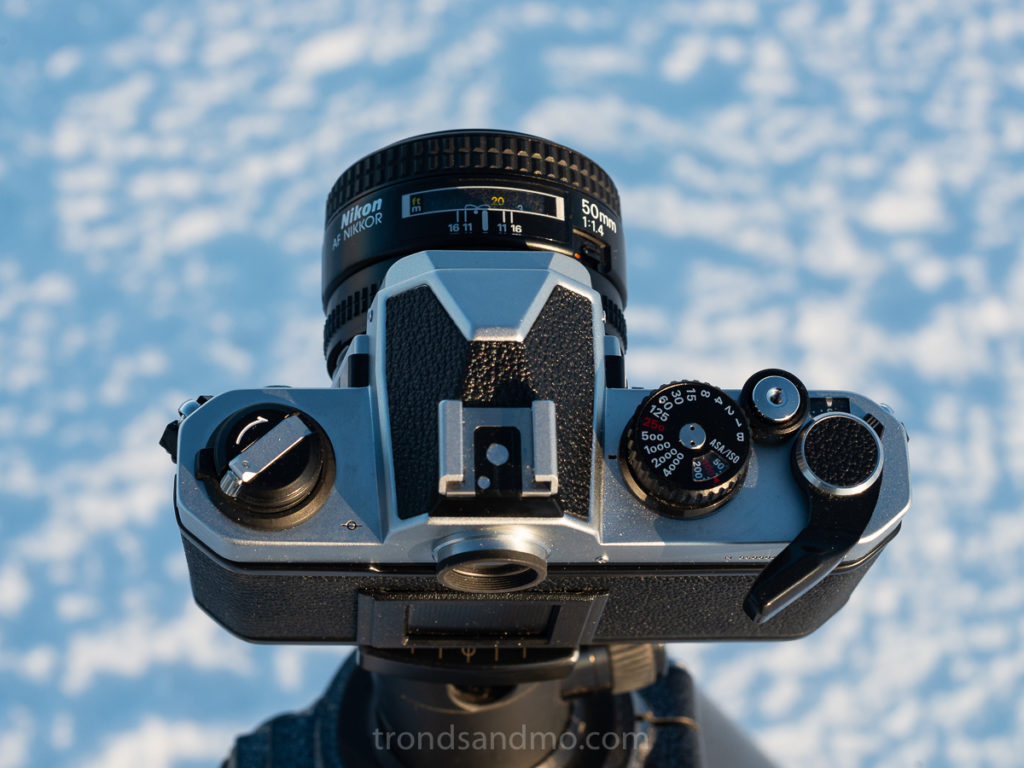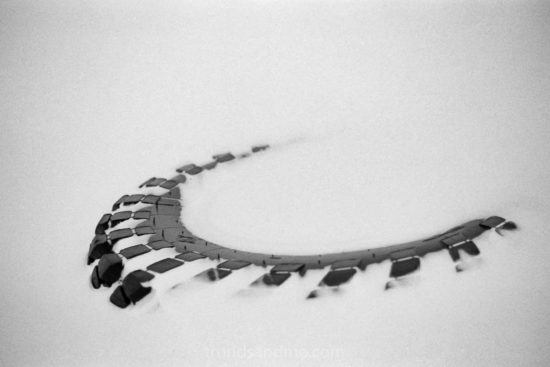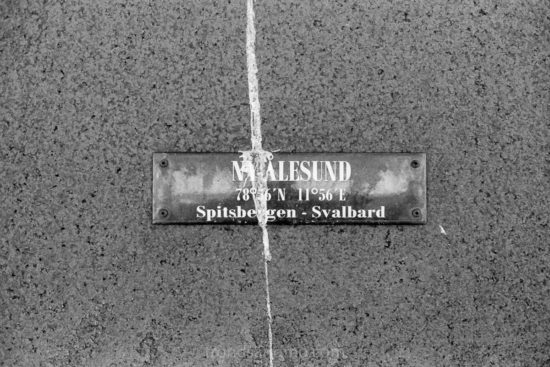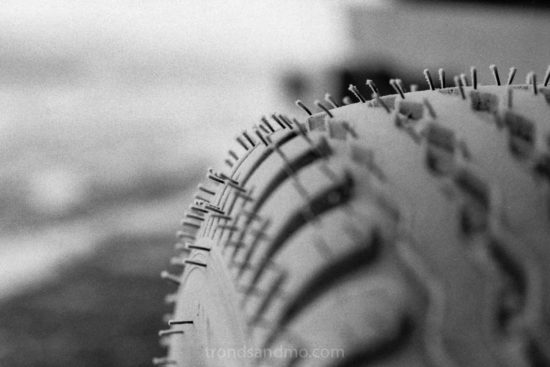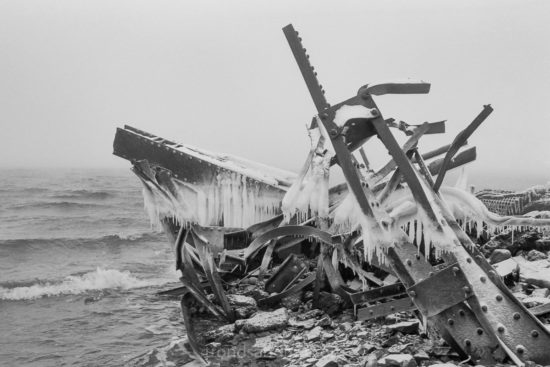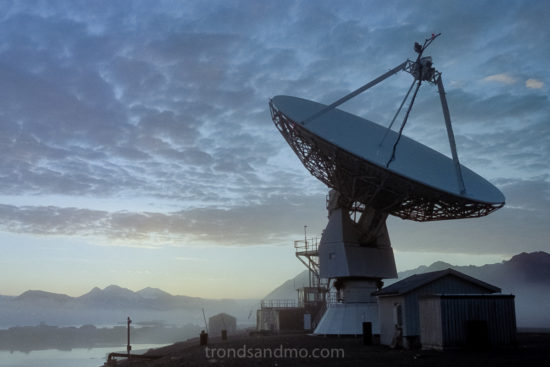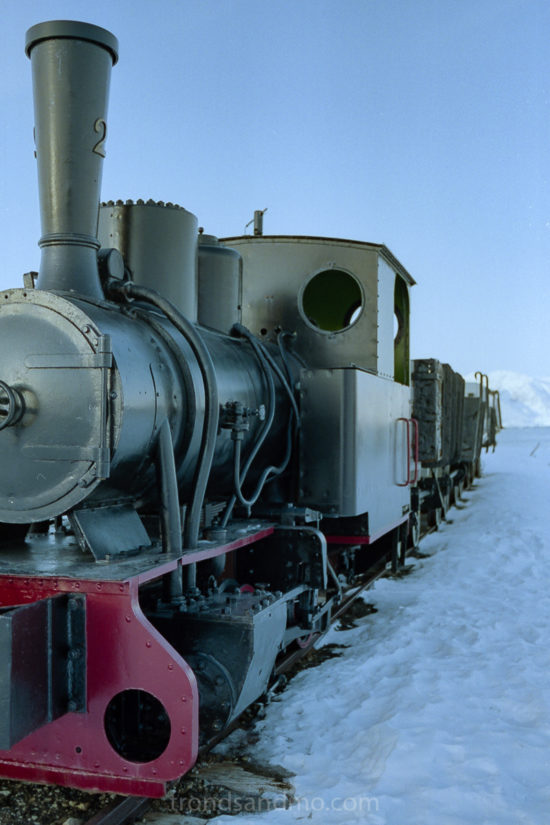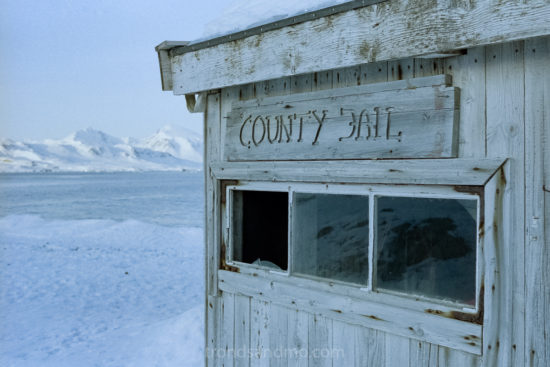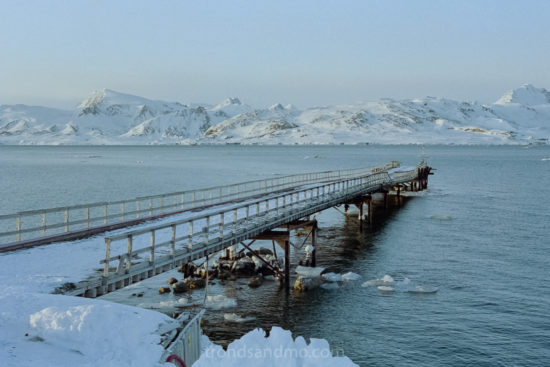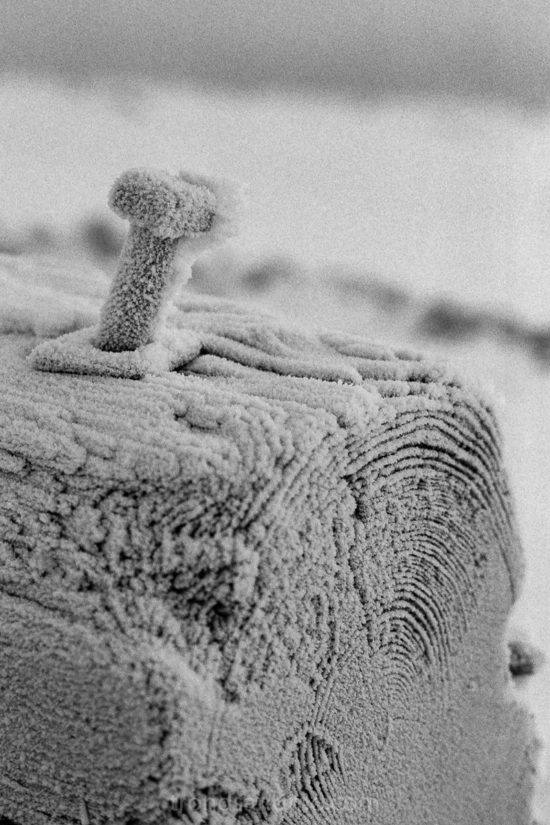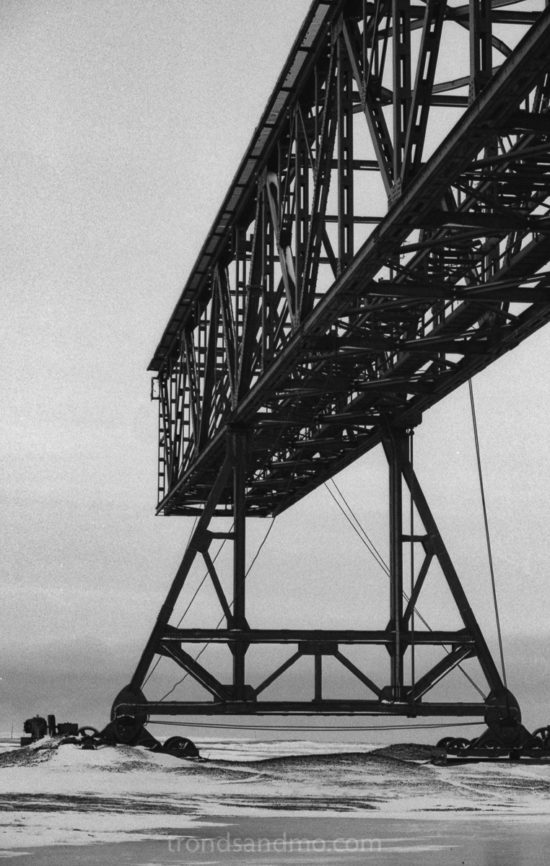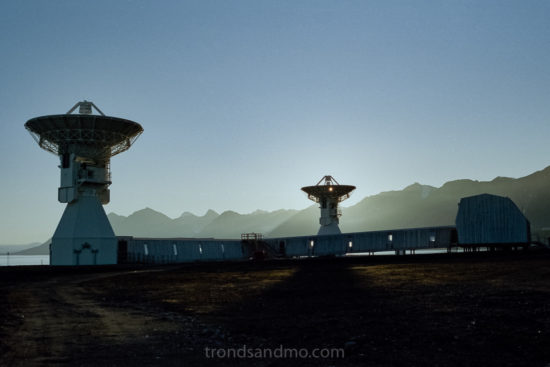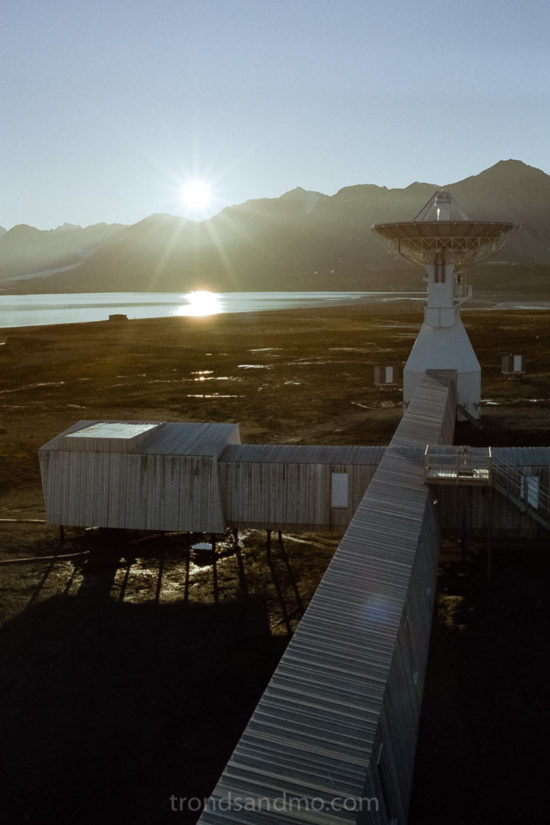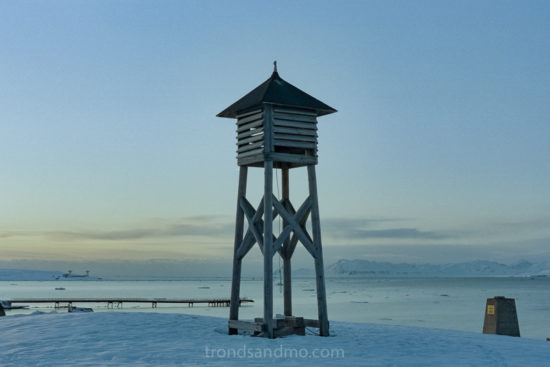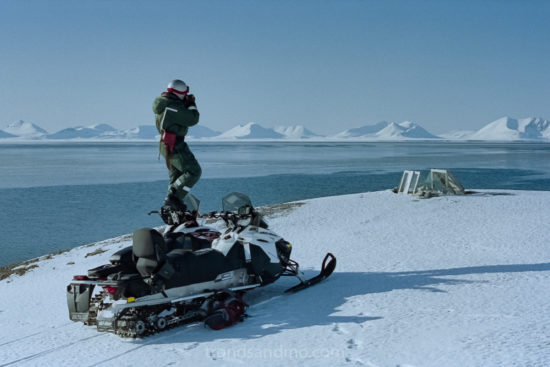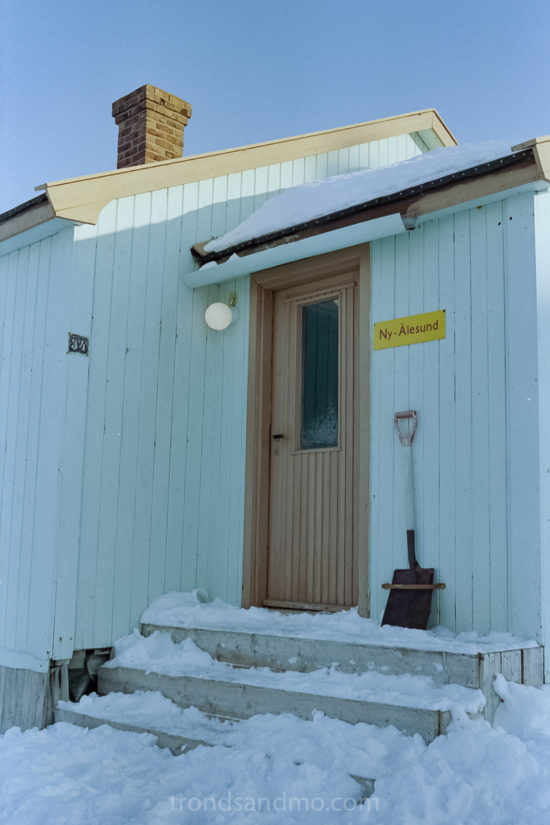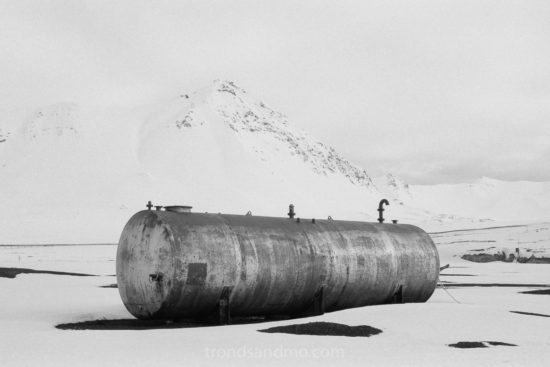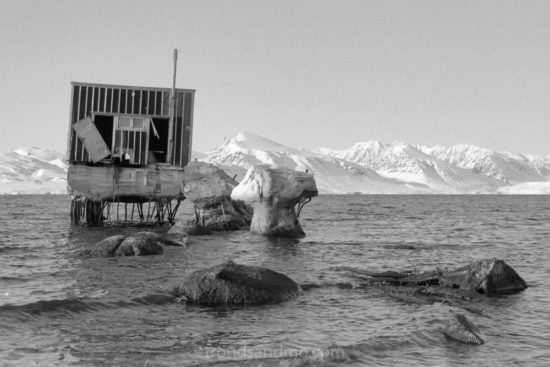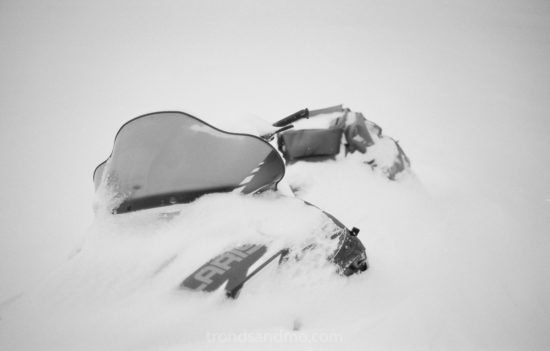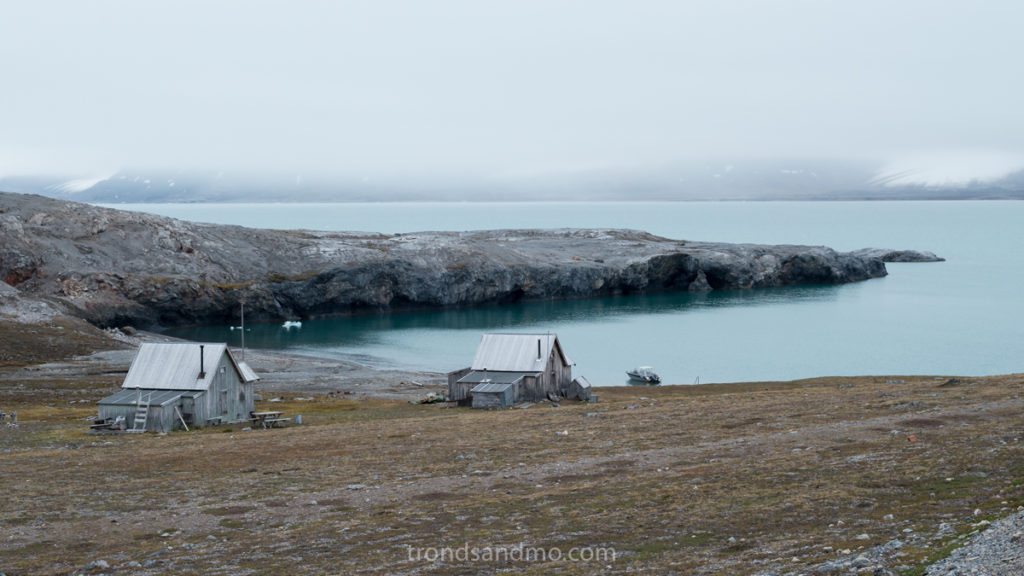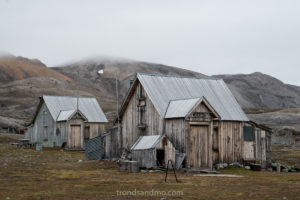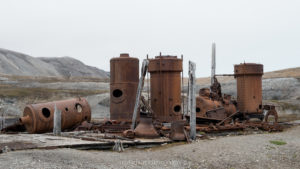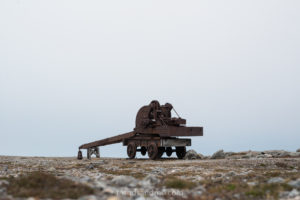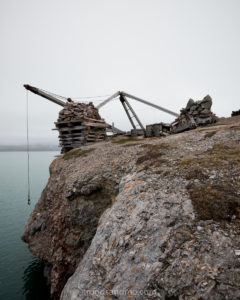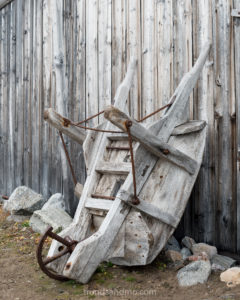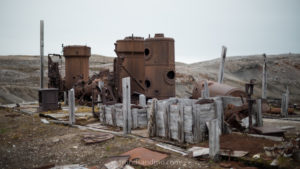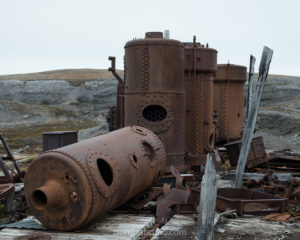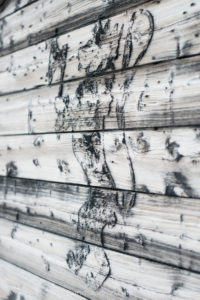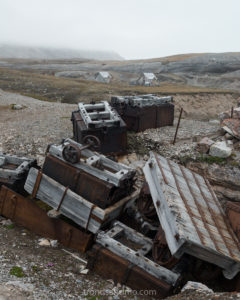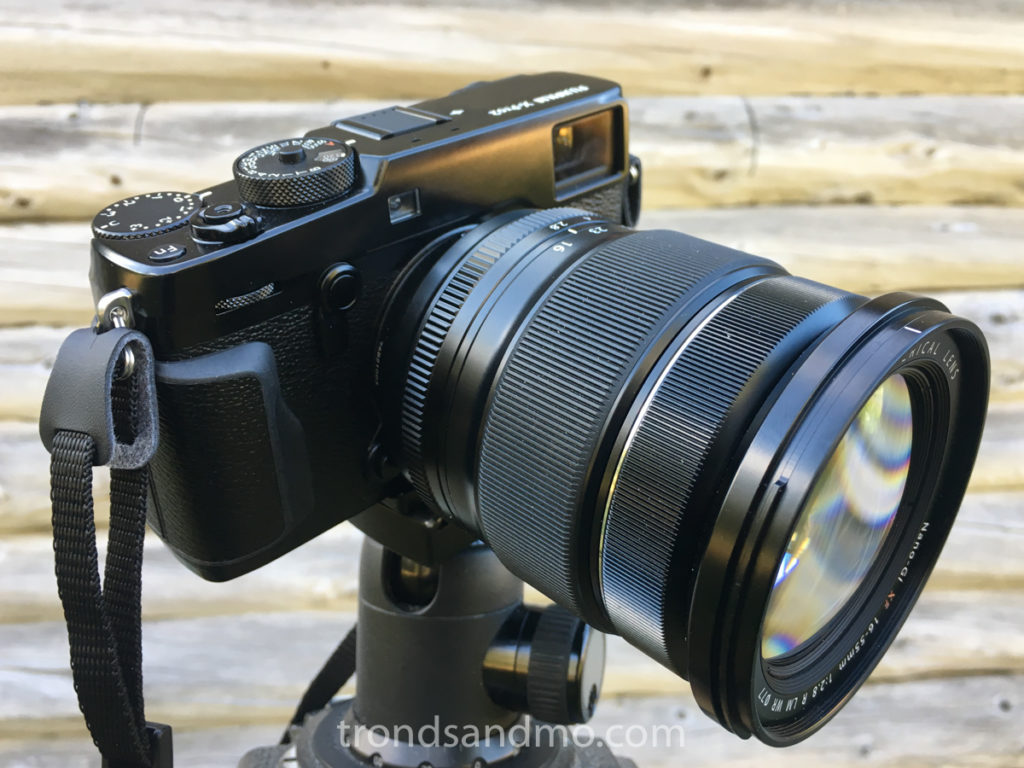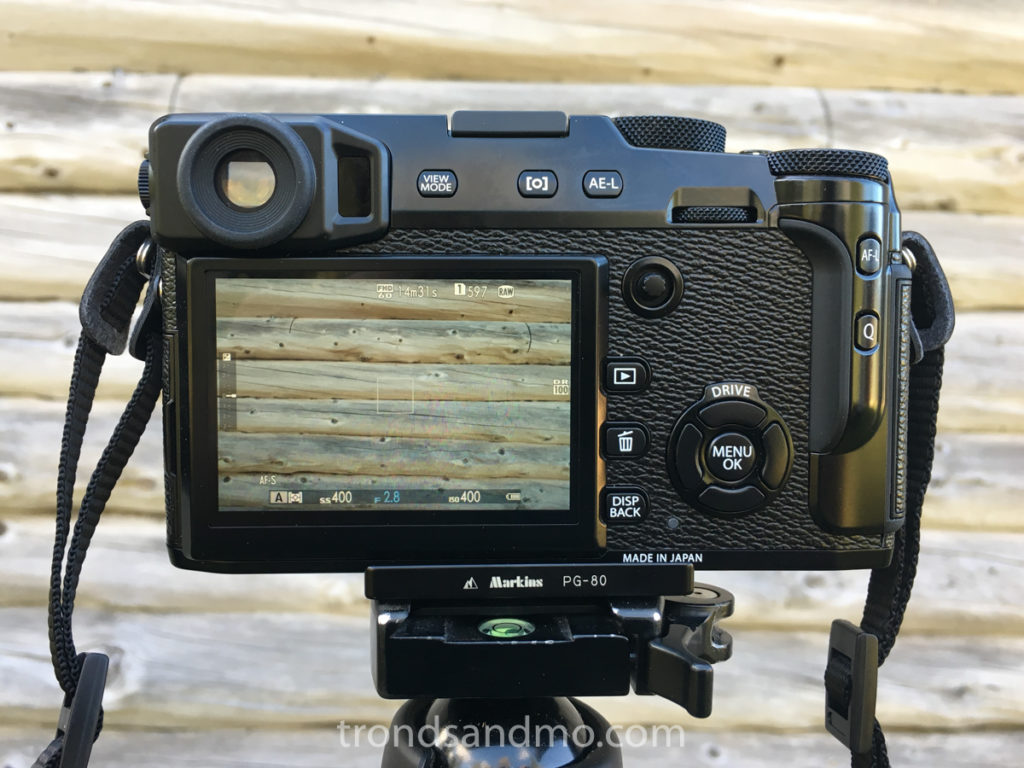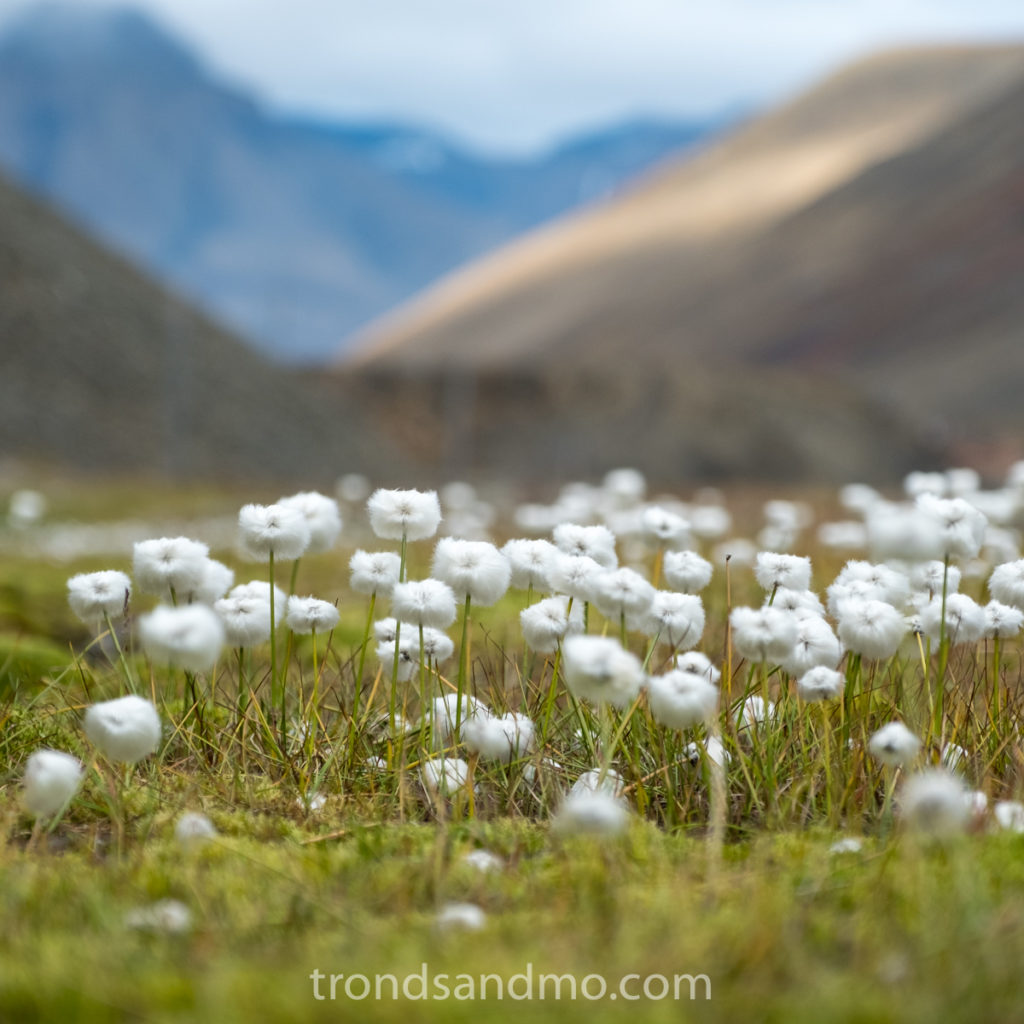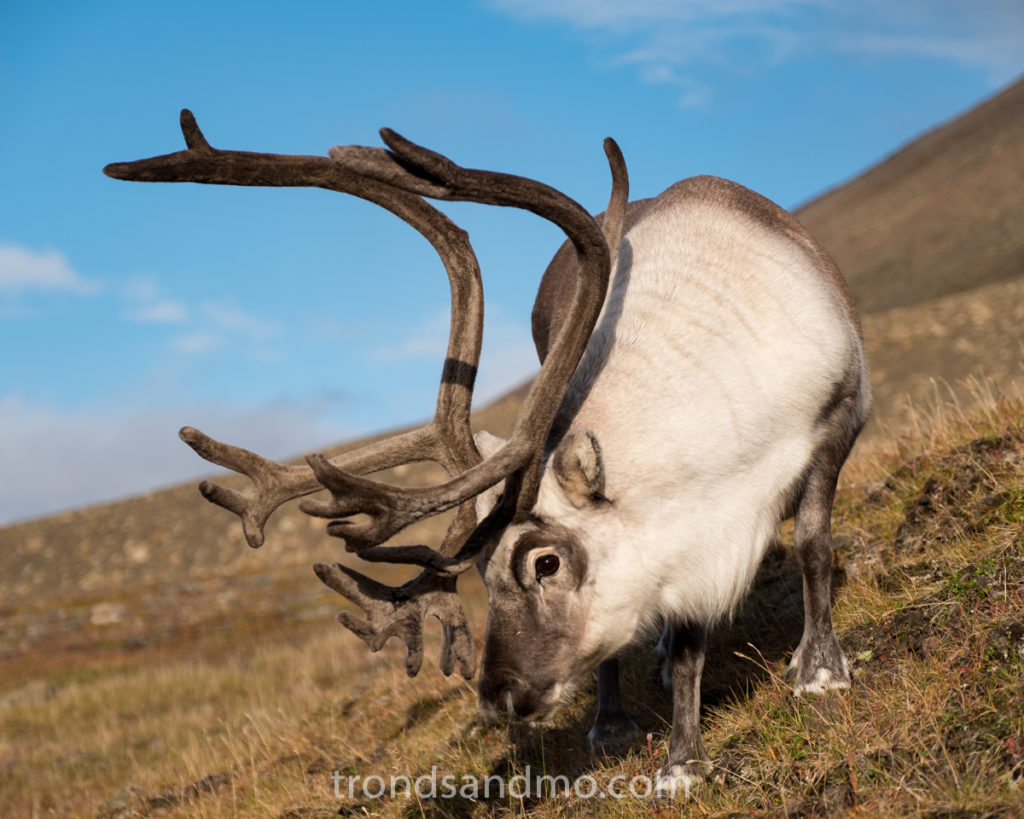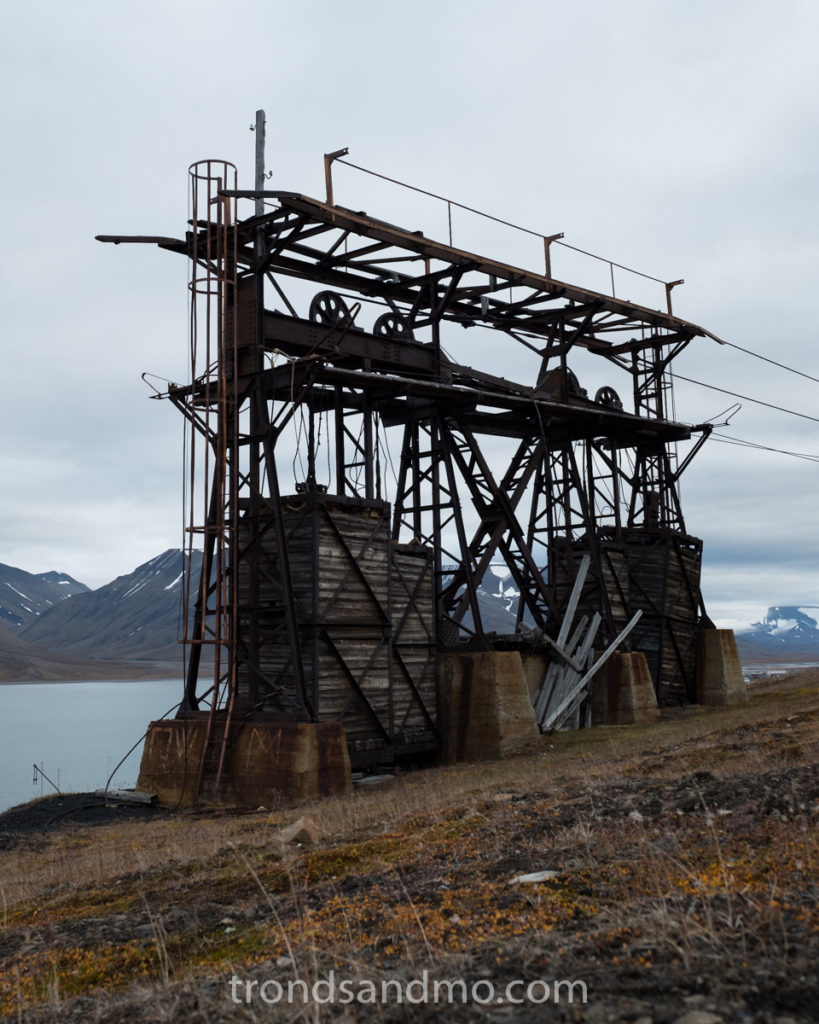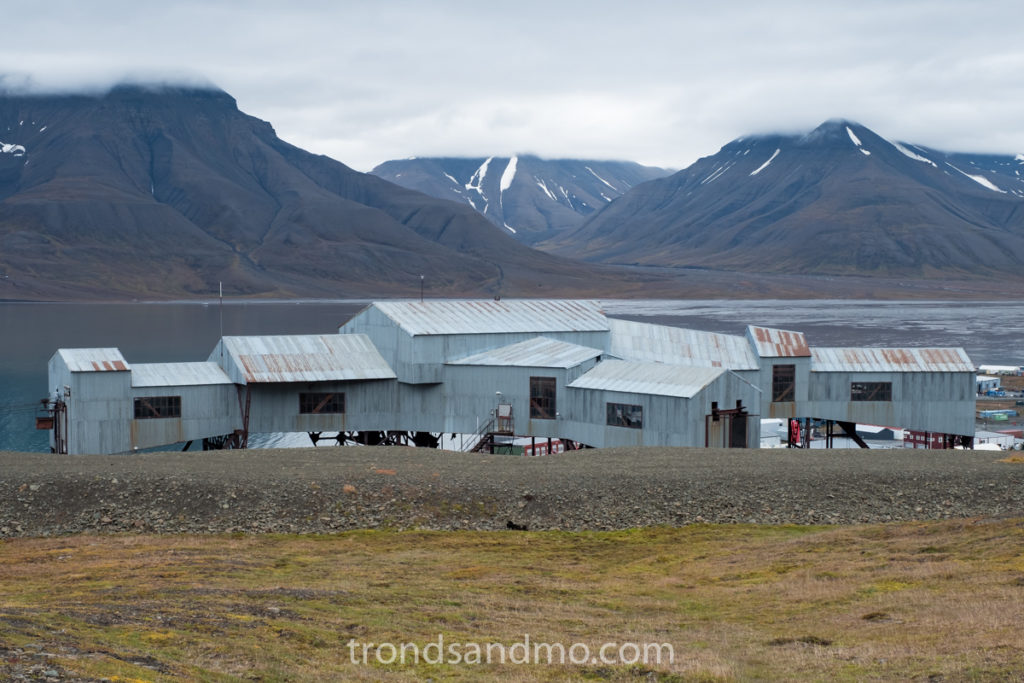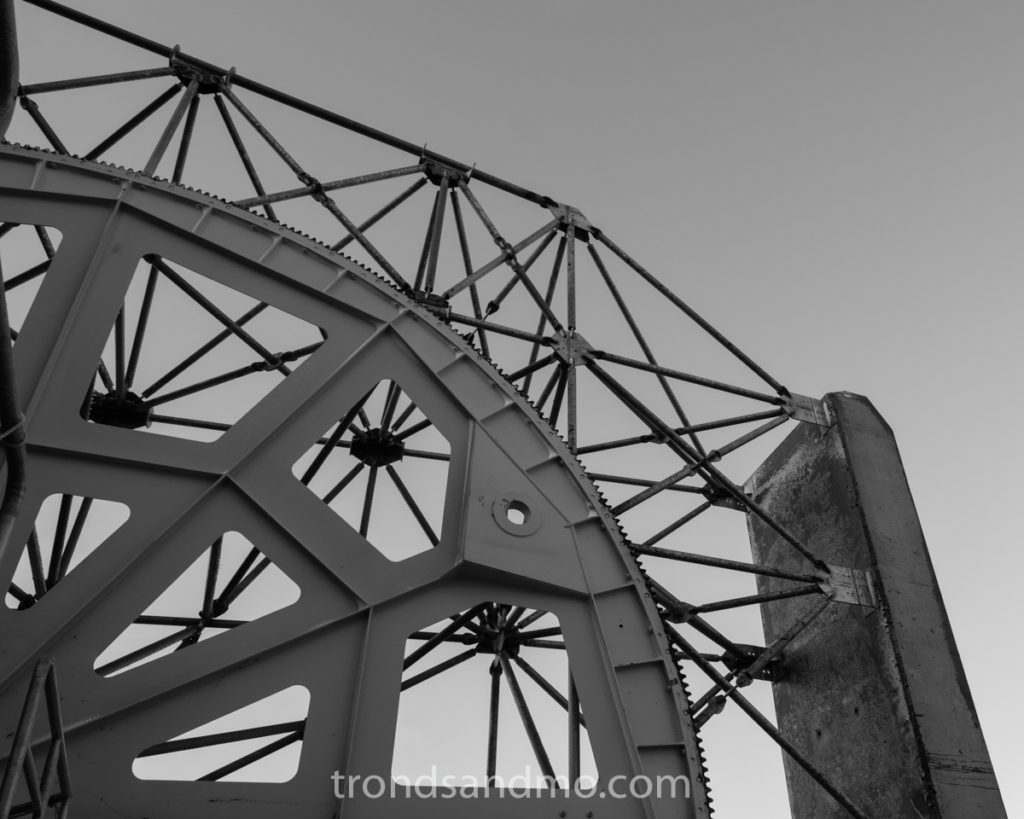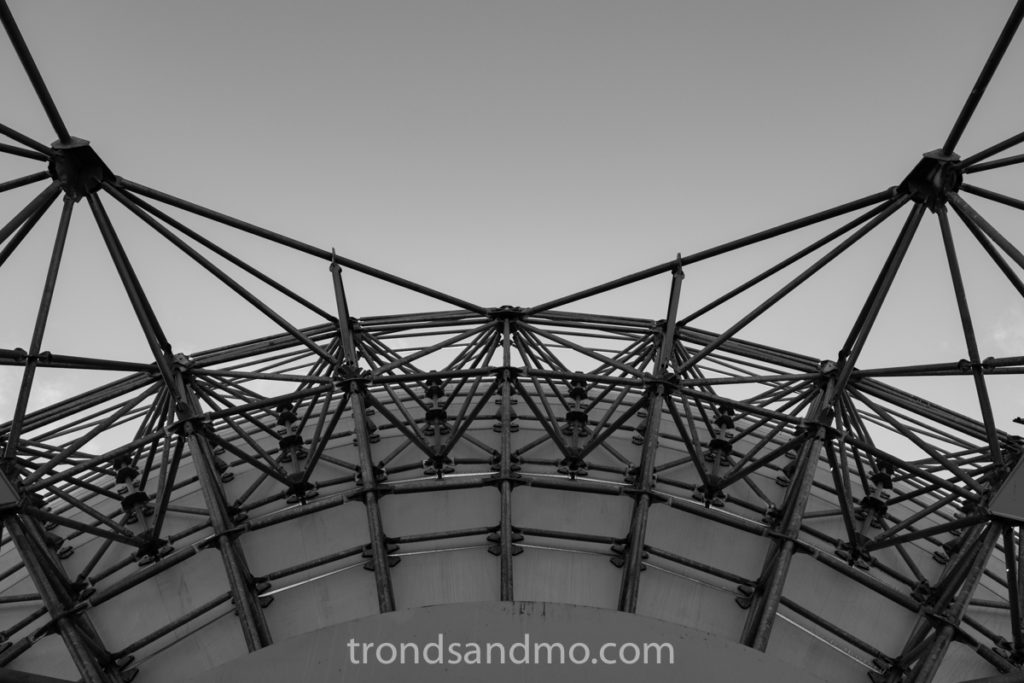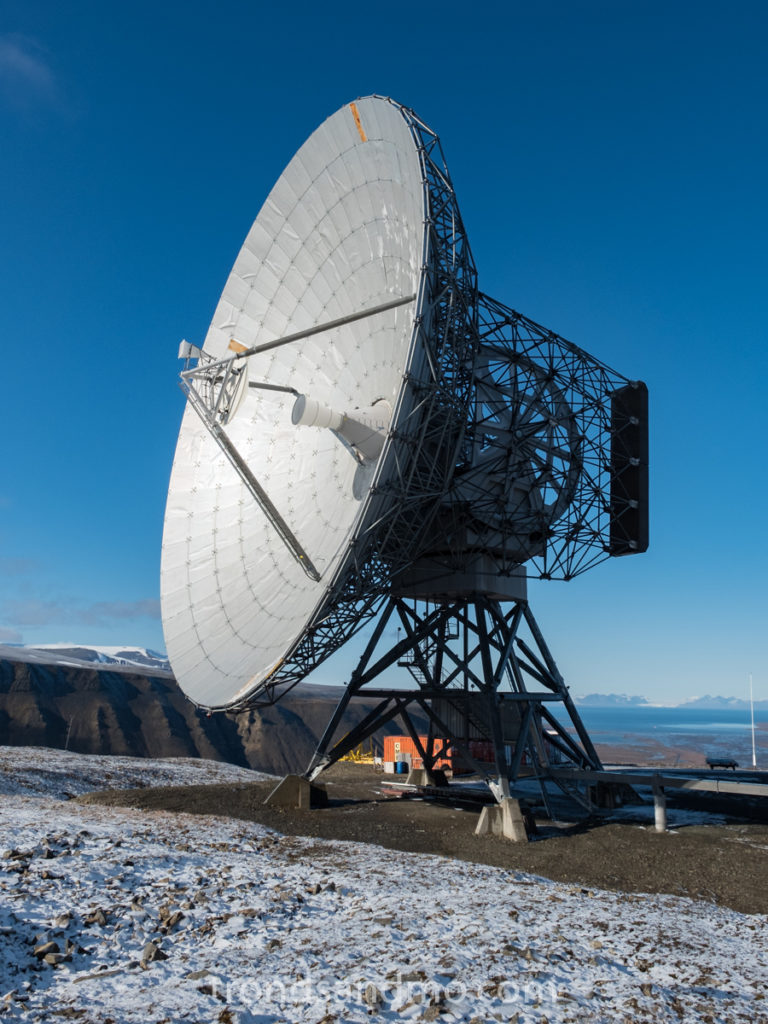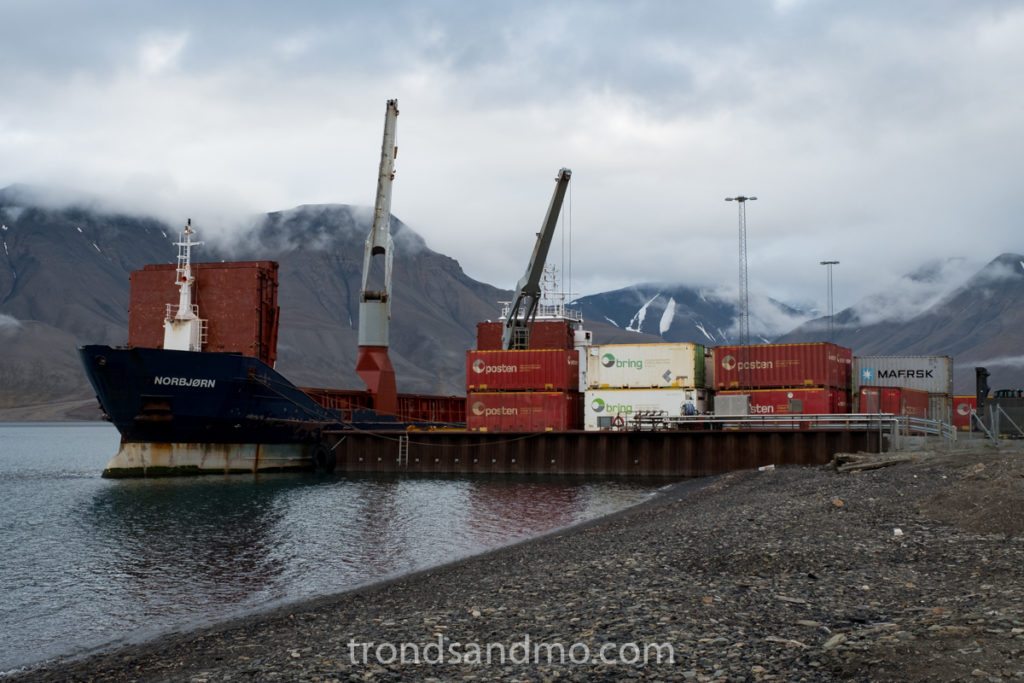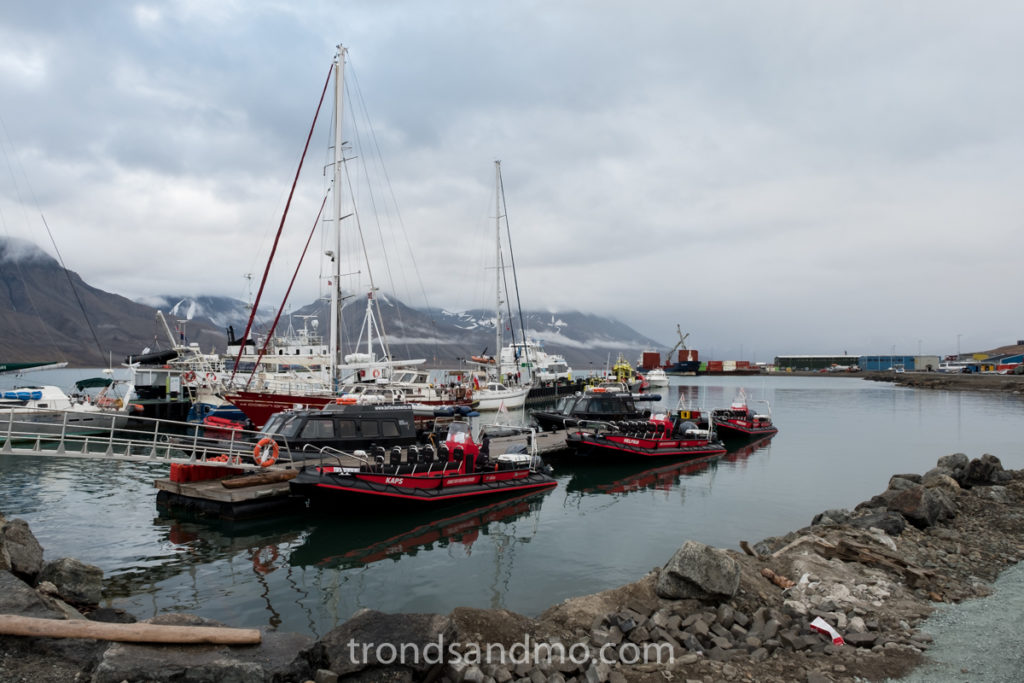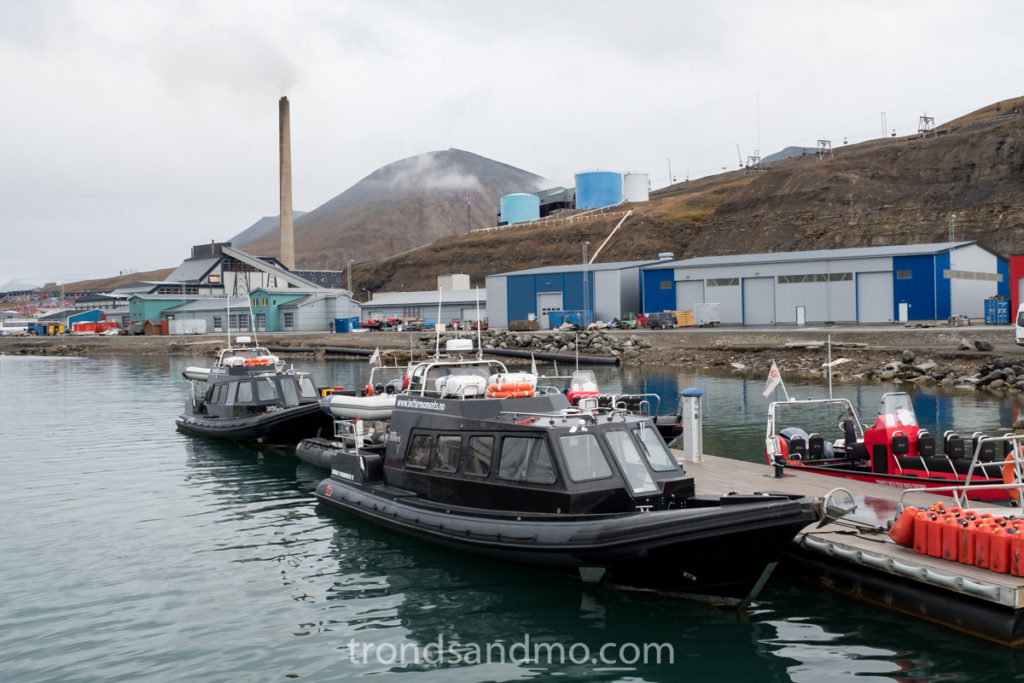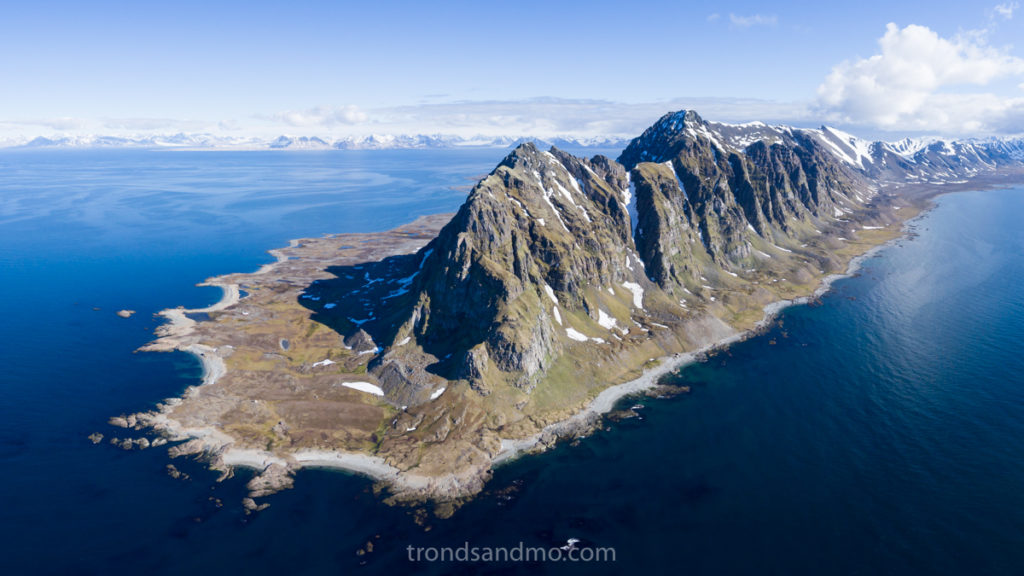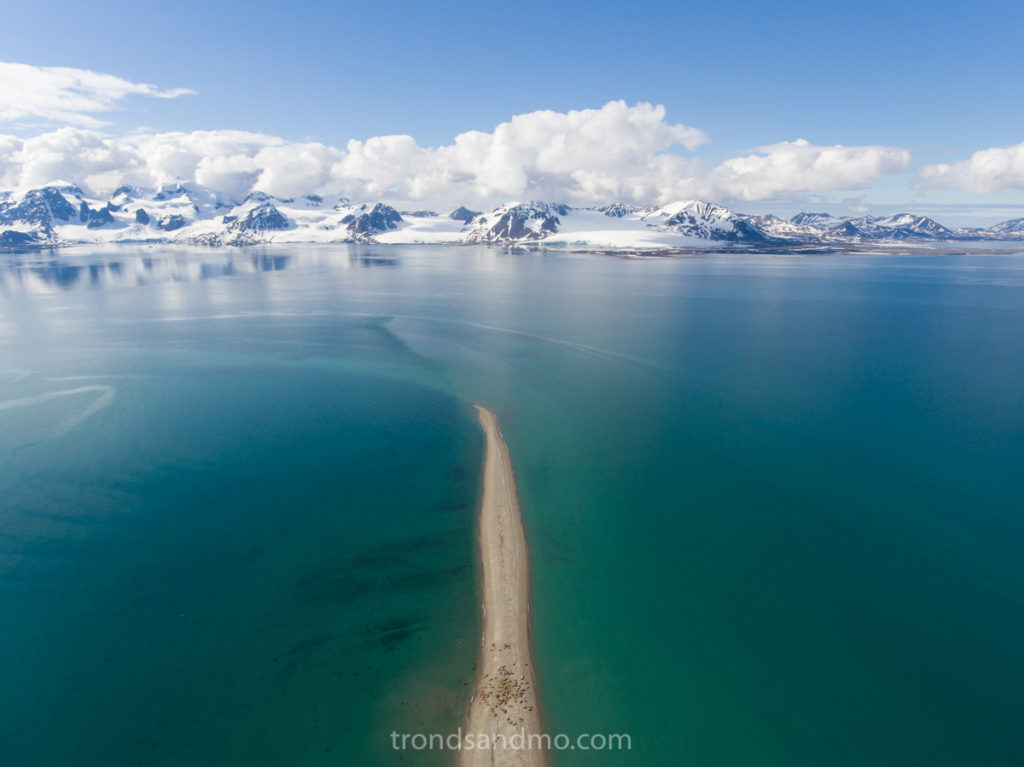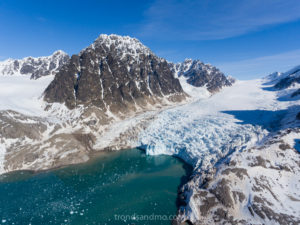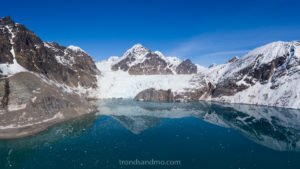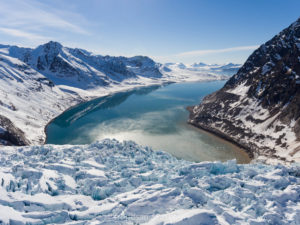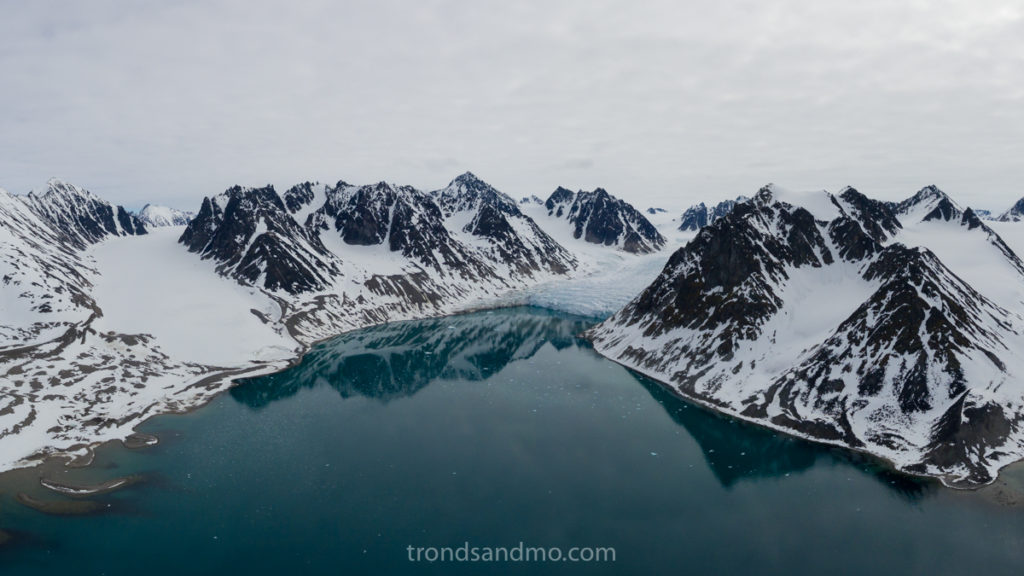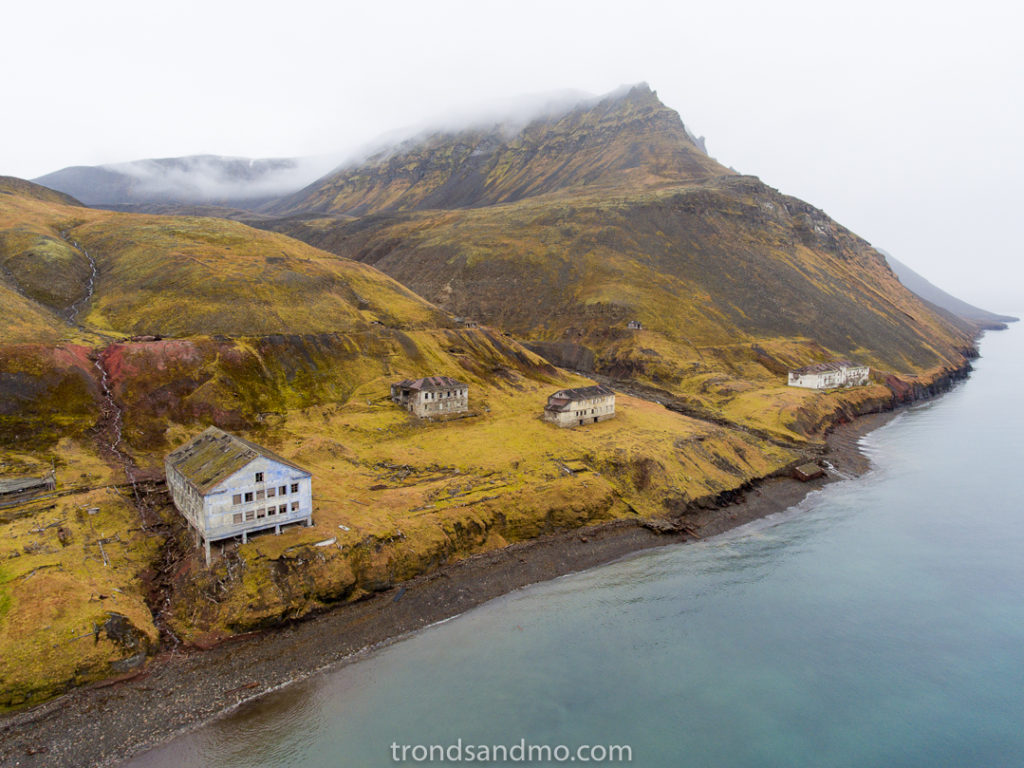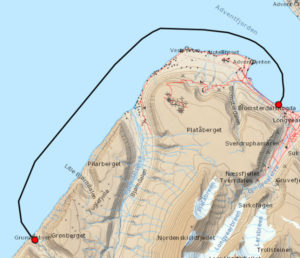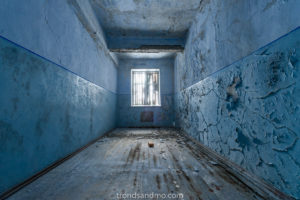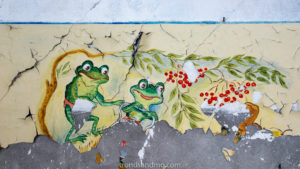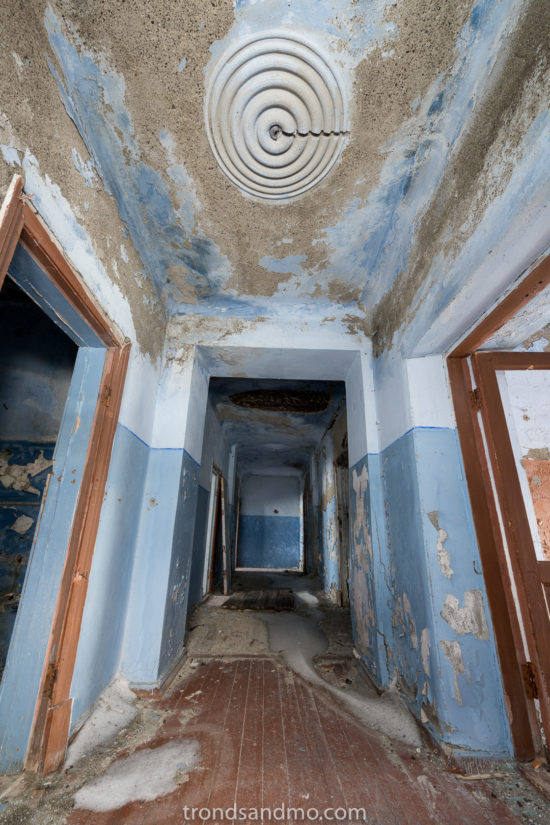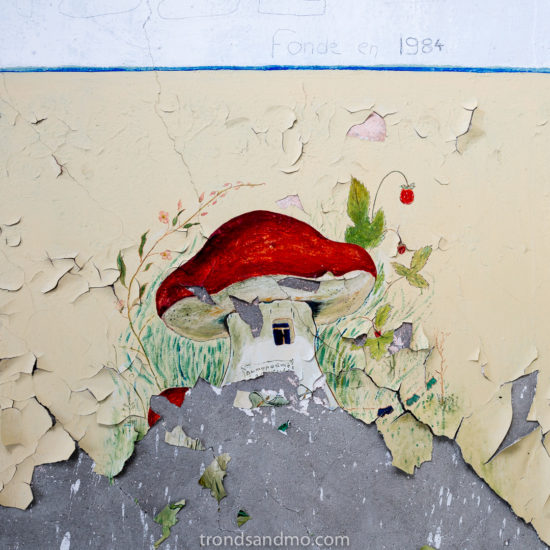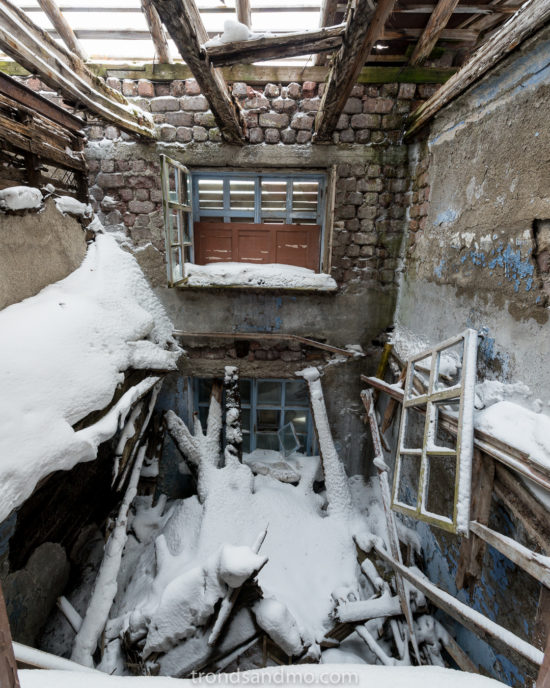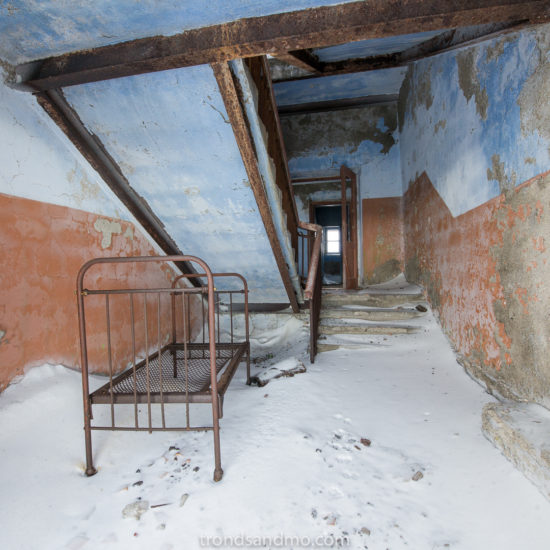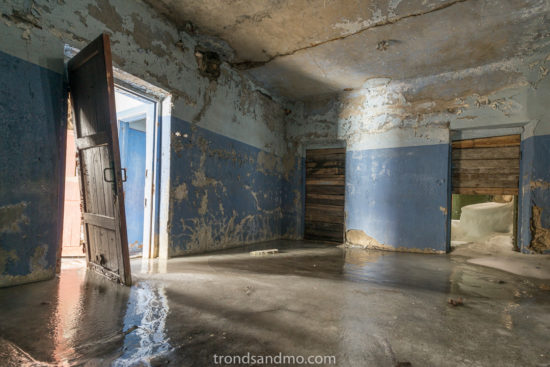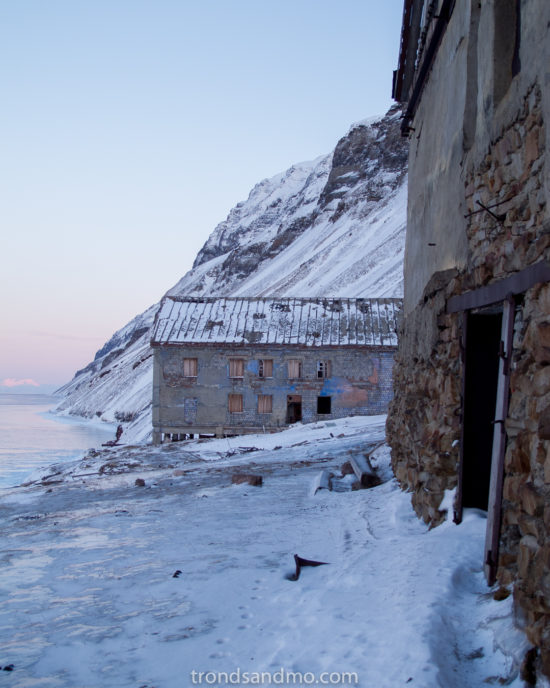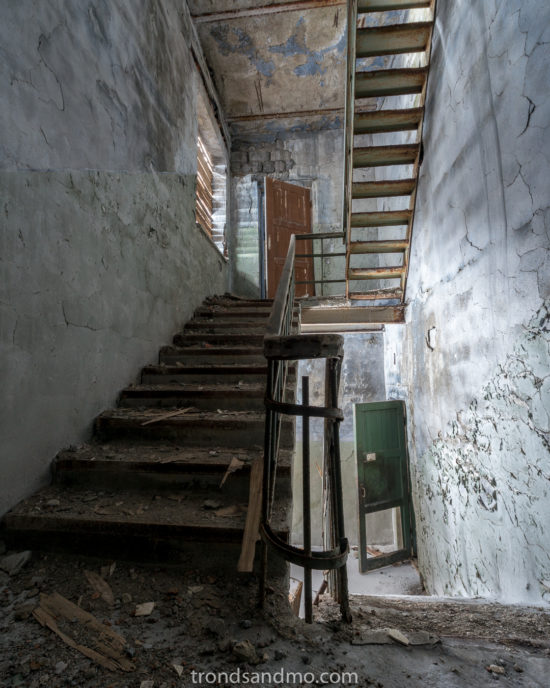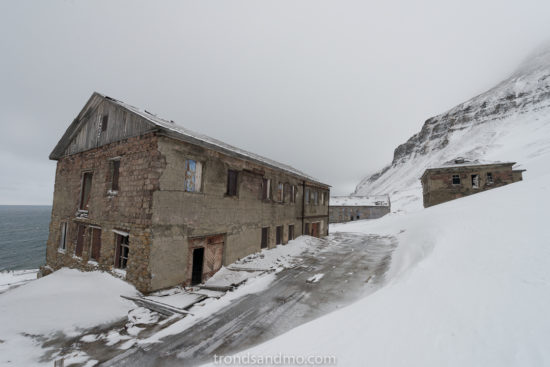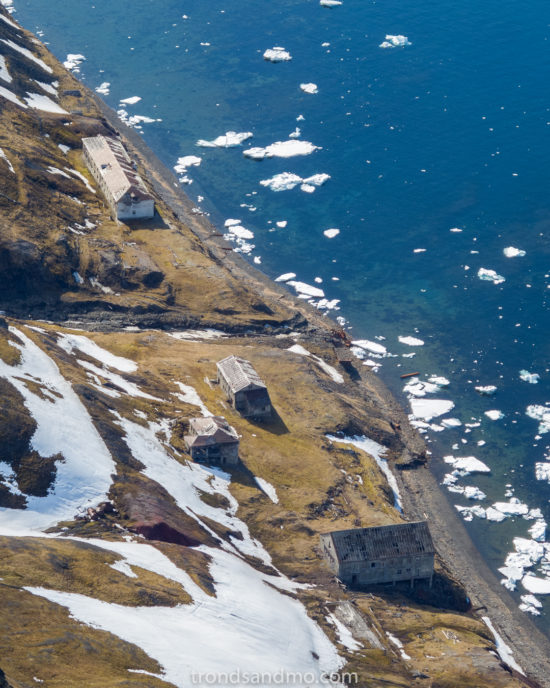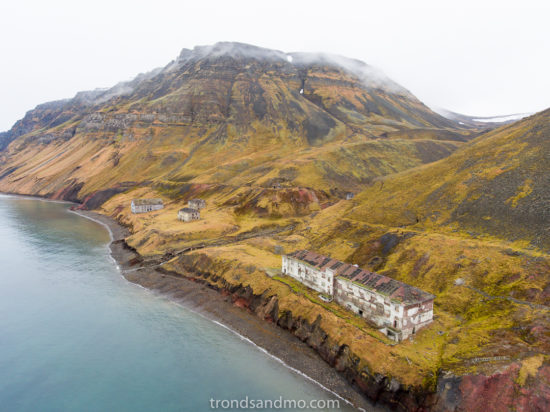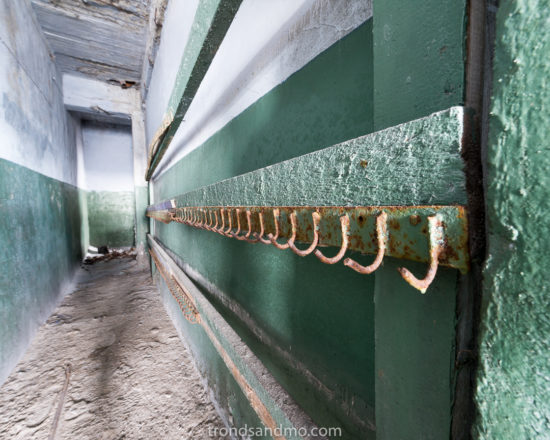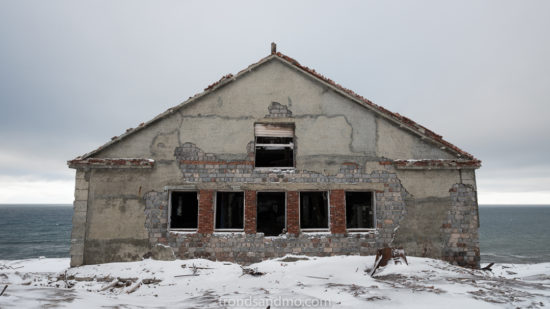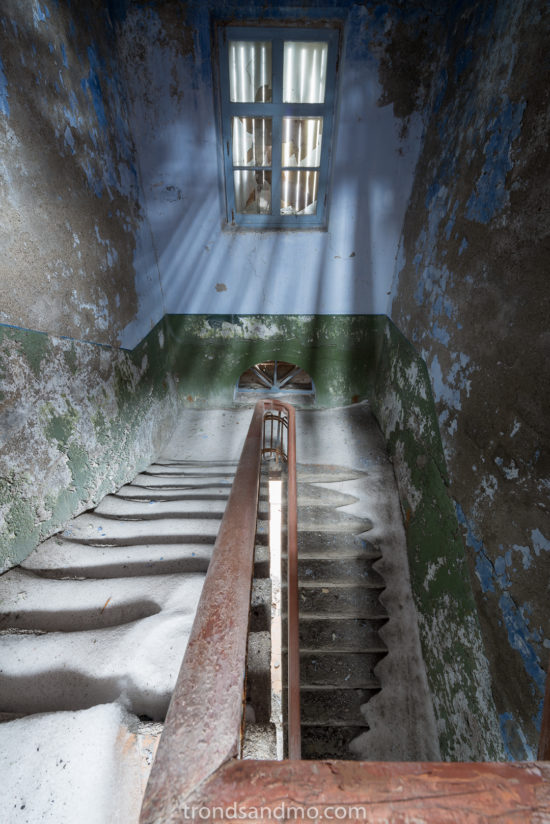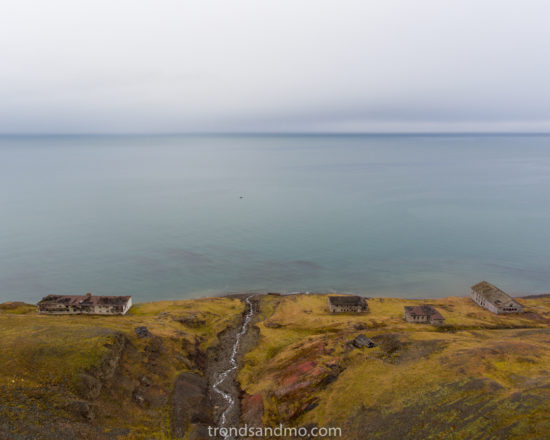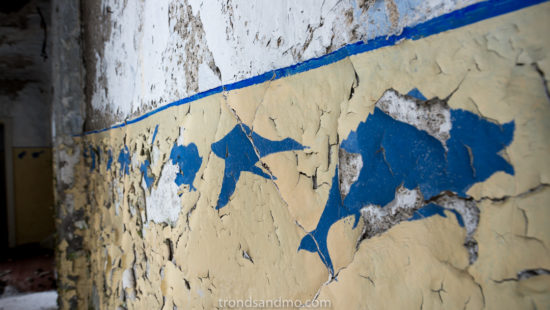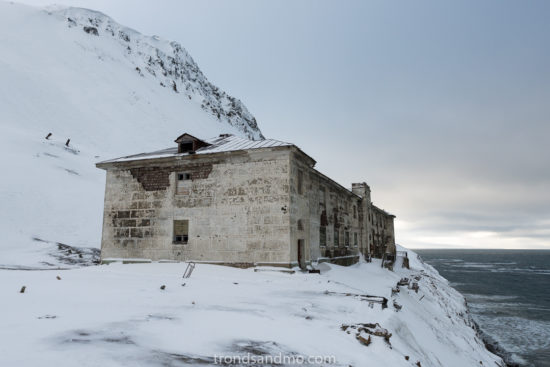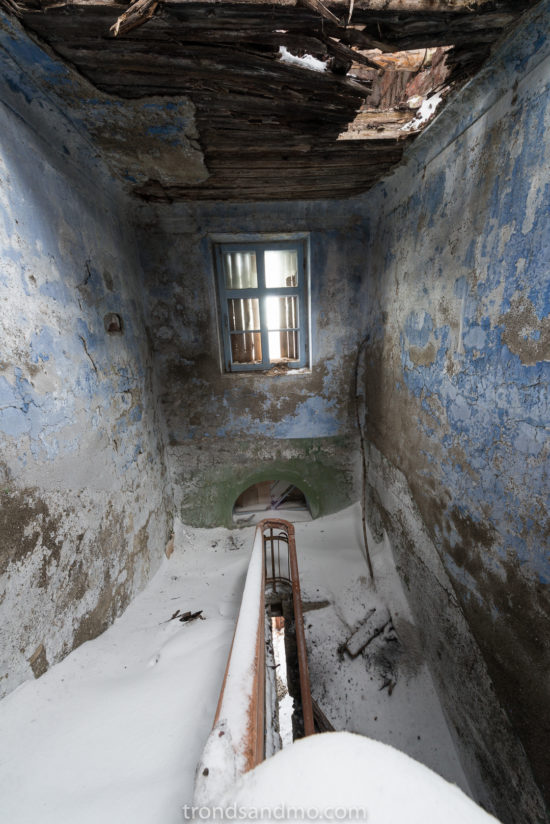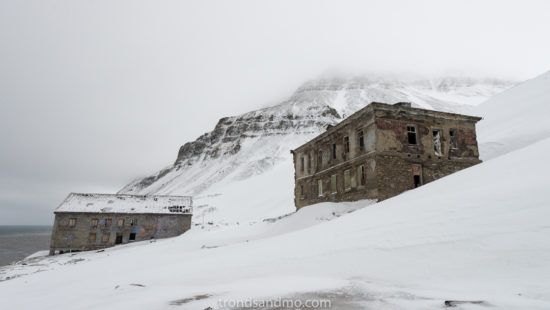New London – Camp Mansfield
The history
The site is located in Kongsfjorden (or Kings Bay in English) on the northwest of Svalbard and is known under several names; London, New London, Ny-London or Camp Mansfield. The Kongsfjord became as early as 1610 discovered by Jonas Poole. Originally he named the fjord Deer Sound. At that time whaling was carried out by Englishmen and Dutchmen in the area. Later, the fjord became known as Koninks Bay (Giles and Rep 1710) and a typing error led to Kings Bay (Scoresby 1820). After the whaling period, the area was mainly used by trappers. Not until the second industrial revolution, New London at Blomstrand Peninsula was explored for resources.
In 1906, marble deposits were discovered by Ernest Mansfield on Blomstrand Peninsula, and the company The Northern Exploration Company ltd started up already in 1911. The facility was quickly set up in subsequent years. Residential buildings, workshops, railways, cranes, steam machines and so on were built on site. Up to 70 people could live and work at the facilities in New London. Not much marble was extracted from the marble quarry, because it turned out that the marble crumbled and was useless. This was probably due to frost action. In 1913, Mansfield was removed from the Northern Exploration Company management and had nothing to do with the company after that. In 1920, the activity in New London was over. The failure was a fact, and equipment and building materials were used elsewhere in Svalbard. For example, several houses were moved to Ny-Ålesund for use in the activity that took place there. The industrial equipment left in New London is among the best preserved from the time before World War I.
What is left at Camp Manfield
On-sight there are two smaller houses that are in good working order. One is disposed by the welfare of Ny-Ålesund and the other one is used by the Governor of Svalbard. The Governor has field inspectors stationed here during the summer period. Four of the houses have moved to Ny-Ålesund. They are refurbished and used by a company called Kings Bay AS. One also finds remains of steam machines, cranes, and railways. The marble quarry is to be found on the hill above the houses. Three minor sheds are still standing.
There are other buildings associated with the activity in New London: 1) Camp Zoe, located Krossfjorden was set up by Henry Rudi and August Olofson on behalf of Ernest Mansfield in 1911. The cabin is named after Mansfield’s daughter Zoe. Henry Rudi used it for trapping during the winter and served as a watchman. I do not know if The Northern Exploration Company Ltd used the cabin in connection with the operation they had, or if it was only for welfare use. 2) At Storholmen a little further into the Kongsfjord, a house stands and was built in 1911 and used by Mansfield.
Other sites
Mansfield and The Northern Exploration Company Ltd have been active elsewhere in Svalbard as well. I can mention Camp Morton was established here to exploit coal. There are other places too, however I think I will save them all for another blog post.
As I wrote, Camp Mansfield was built to accommodate 70 people. One can only wonder how they managed. It was certainly a shock for workers who come from UK up to the ice cold Svalbard. I will believe they lived cramped and had long working days. But still it was a pleasure to work for Mansfield. After what I managed to read about him, he was a well-liked man, with good intentions.
How to get there
Peirsonhamna where New-London is located is 5 km north east over the fjord from Ny-Ålesund. The easiest way to travel there is by boat. Actually it is the only way because the Blomastrand peninsula is actually an island. It came for a day when the glacier melted that the peninsula actually was an island. There are regular tourist boats arriving New London, and you can check with your tourist agency. Peirsonhamna is a very good harbor. Had I not known better, I could believe that it had been cut out for the purpose. Boats are protected from the heavy weather that can come from the west.
Tourism
Such cultural monuments are very exciting to visit, and I understand that tourism is occurring around such places. Unfortunately, tourism has risen enormously in recent decades. Not only in Svalbard, but everywhere. When a cruise ship puts hundreds or, in the worst case, thousands of passengers into vulnerable cultural monuments, it eventually results in wear and tear. I feel this is destructive and want the practice to change for the better. But I think tourism has come to stay and it is up to local politicians to set reasonable limits.
“Take nothing but pictures. Leave nothing but footprints” Is a good rule to follow. These places exist because there was activity in the area and the facilities and location served people a purpose. Today they are a memory of a bygone era. Let us not destroy them or affect them in any way with today’s activity.
In fact, human traces and cultural monuments from the time before 1945 are protected by the cultural heritage laws for Svalbard. Please be careful and show respect for the place.
Fujifilm X-Pro2 with XF16-55mm F2.8
I am all the time looking for smaller cameras that have excellent image quality and with a single versatile zoom lens. I consider myself to be an outdoor person. I hike a lot in the mountains, driving both boats and snowmobiles. When I search for new photo equipment, I want the weight and volume to be as low as possible. When I have to carry it in the backpack together with other necessary equipment, it goes without saying that large DSLR´s with many lenses are not preferable. I prefer that the camera is solidly built. The equipment need to withstand some beating and bad weather. With a single versatile zoom range, I mean 24-85mm (full frame 35mm equivalent). That is what I am looking for, and I hope this setup suits my needs for a all-around camera.
Fujifilm X-Pro2 is a mirrorless rangefinder camera with interchangeable lenses and a hybrid viewfinder. The viewfinder can be either optical, electronic or a combination of both of them. Fujifilm has installed a 24MP cmos sensor and X-Processor Pro engine to take care of the image processing. The camera has 91 focus points and it is possible to move the focus point easily with the joystick to quickly achieve good focus. It shoots at maximum 8 frames pr seconds and is well suited for fast-paced situations like sports and wildlife. The camera seems to be ruggedly built, and according to Fujifilm, it is weather resistant. They write on their website: “Made from magnesium and designed to be dust-resistant, splash-resistant and freeze resistant up to -10°C.” The camera has both electronic and mechanical shutter. It can take up to 1/32000s with electronic shutter and 1/8000s on mechanical. You can easily take pictures with the largest aperture even in the brightest situations. The important settings is easy to change without having to enter the menu. Aperture, Shutter, ISO and exposure compensation. Fujifilm must have put a lot of thought into the design.
Key specifications XPro-2:
- Sensor: 24MP X-Trans CMOS III with primary colour filter. APS-C size
- Sensitivity: ISO 200 – 12800
- Exposure: Program, Aperture priority, shutter speed priority, manual
- Exposure compensation: +/- 5EV 1/3 step
- Shutter speed: 1/8000s (mechanical), 1/32000s (electronic), Bulb 60min.
- Viewfinder: EVF and OVF
- Continuous shooting: 8fps
- Focus: Single AF, Continuous AF, Manual
- Image stabilizer: No, but some lenses have
- Lens mount: Fujifilm X mount
- Auto bracketing: Yes
- Interval time shooting: Yes
- Video: Yes
I Have decided to just have one standard zoom lens on this camera. The choice fell on a 16-55mm f/2.8. (24-85mm) lens. The lens is edge to edge sharp across the entire zoom range and one can easily achieve beautiful bokeh effect both in front and background. According to Fujifilm, the lens is weather-resistant, dust-resistant and -10 ° C low-temperature operation.
Key specifications XF 16-55mm f/2.8 LM WR
- Focal length: 16-55mm (24-85mm)
- Angle of view: 83°-29°
- Max aperture: F/2.8
- Min aperture: F22
- Filter size: 77mm
What I liked
- I like the style of shooting with this camera. Aperture on the lens and shutter / ISO on a dial on top of the camera body.
- Easy to move focus point with joystick even with an eye on the viewfinder.
- Electronic viewfinder is super and has worked for me in all cases
- Sharp, bright and versatile lens
- Fast startup time
What I did not like
- The weight is too high and it becomes difficult to operate with one hand
- The exposure compensation dial needs a lock. Easy to make a mistake.
- The lens is in the way of the optical viewfinder. About 30%. Probably better on shorter lenses.
- The LCD screen has no tilt. Useful in tight spaces
- The viewfinder window is tiny.
- This setup is expensive. About 2900 USD for both camera and lens
I have been using a Fujifilm X100T the recent years, and been very pleased with it. I was excited to see if Fujifilm managed to make a rangefinder that would also work well with interchangeable lenses. Fujifilm has managed to make a great camera, but I see that the electronic viewfinder is chosen over the optical viewfinder in all cases. In addition to that, I see that the weight of this configuration was somewhat high. There is not much to grab onto, and the best way is to use my right hand on the camera house and my left hand on the lense. Wondering how a 3rd party thumbrest would work on this camera.
Fujifilm claims the camera can work down to -10 celsius. Considering battery life, I am excited about how it will work in the cold at Svalbard. Global warming is a fact, but it is still very cold many months of the year. The camera seems to be weather resistant and as solidly built as they claim, however I would still find a suitable bag for it.
Fujifilm has added a feature called lossless compression on the RAW file. Using it achieves a 50% reduction in file size, but the files are slower to process in Lightroom. I prefer uncompressed. I noticed that the original jpg files looked very good. They were sharp and the colours looked correct when using auto white balance. I had to struggle in Lightroom to achieve the same result with the RAW files.
When it comes to the lens there is nothing negative to say. I have mentioned that it lacks optical stabilization (OIS), but at the same time it is so bright that I do not think it will be absolutely necessary for me with such a feature.
Conclusion
If I had to compromise and just owning a single camera, then I think the Fujifilm X-Pro2 would suit me best. I could deal with weight/grip and other minor issues, and the fact that the battery empties faster than with a DSLR. It is rugged, versatile and the images it produces are really good. The way the camera is built encourages an original/native shooting style. I like it.
It will be exciting to see how Fujifilm evolve these mirrorless cameras in the future. If I were in charge and could influence the next upcoming X-Pro3, then I would make a operator lock on the exposure compensation dial, make a larger viewfinder window and redesign the grip.
Note: All photos taken with Fujifilm X-Pro-2 are from Longyearbyen, Svalbard or the surrounding area. Three pictures from the Eiscat radar located at Breinosa 15 km east of Longyearbyen. Three pictures from the tourist harbor in Longyearbyen and two pictures of old industrial facility used in the coal industry. The image of the reindeer and eriophorum is taken close to the center of Longyearbyen.
Drone shots North-West of Svalbard
After moving to New-Ålesund, I have not flown as much drone as I wish. This is because Ny-Ålesund does not allow us to use wi-fi frequencies or mobile phones. There is scientific research going on in the area that does not want any rf-interference. But beyond the 20km radius, I can fly as much as I want. I have been to a few trips this summer and there are some pictures to present.
Prins Kars Forland
Prins Karls Forland, is an island off the west coast of Svalbard. The island was first discovered by the Dutch explorer Willem Barents in 1596. The whole island and the sea around make up Forlandet National Park.
Krossfjorden
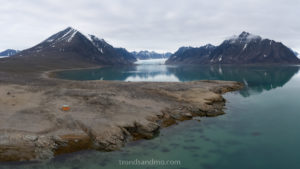
Drone shot taken in Møllerhamna over Lloyds Hotel. In the distanse we see Kollerfjorden and Kollerbreen. To the left Kronprins Olavs fjell. Krossfjorden Svalbard
Means Cross fjord in English. 15 km into the fjord, Krossfjorden is divided into two by the King Haakon Peninsula. The eastern fjord side is also divided into several smaller fjord arms. Ebeltofthamna In the inlet to Krossfjorden was the first semi-permanent whaling station on Spitsbergen. Here came English already in 1610. In the period after the whalers, the area was used by fur hunters on wintering. In recent times the area is used primarily for tourism and research.
Magdalenefjorden
William Barents was the first to explore Magdalenefjorden in 1596. Both Englishmen and Dutchmen have since had a whaling station in the fjord. In Trinity Harbor one can find remains after the whaling period. And a burial site of 130 graves.
